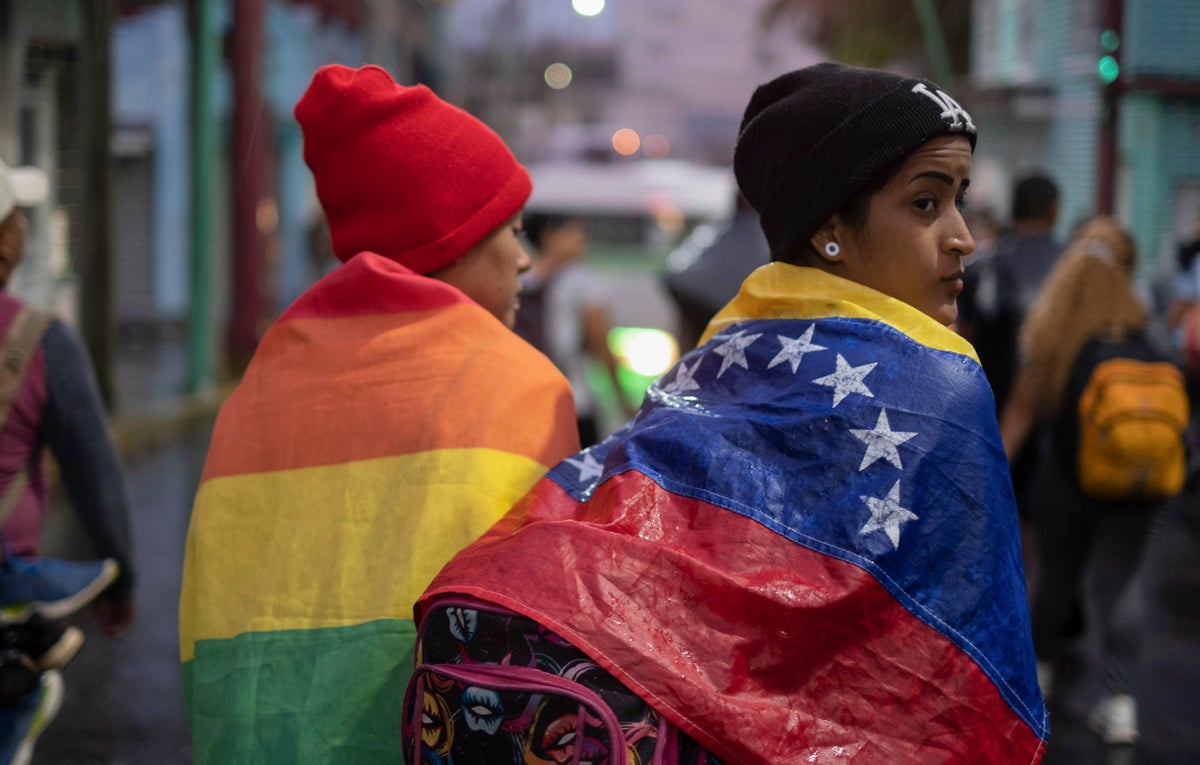
When Mexico imposed a visa requirement on Venezuelans in January, it briefly had the desired effect: The number of Venezuelans detained at the U.S.-Mexico border plunged. But it’s now clear that it only pushed the migrants onto more dangerous clandestine routes.
Suddenly unable to simply fly to Mexico as tourists, but still desperate to leave their country, Venezuelan migrants joined others traveling over land through the dense, lawless jungle on the Colombia-Panama border.
In 2021, when Venezuelans could still fly to Cancun or Mexico City as tourists, only 3,000 of them crossed the Darien Gap — a literal gap in the Pan-American Highway that stretches along 60 miles (97 kilometers) of mountains, rainforest and rivers. So far this year, there have been 45,000, according to Panama’s National Immigration Service.
“If they can’t arrive at Mexican airports, they’re arriving by land through the Darien,” said Adam Isacson, of the Washington Office on Latin America. From there it’s just series of stops: in southern Mexico, the remote middle of the Mexico-U.S. border and then a final destination in the U.S., usually on the East Coast.
Such visa requirements can stop some migrants — the pace of Brazilians and Ecuadorans slowed after Mexico imposed them last year — but not others, Isacson said. “It has to do with the level of desperation,” he said.
Venezuela’s economy has collapsed under a combination of mismanagement and U.S. sanctions. The minimum wage for public employees has fallen to the equivalent of $2 a month. Monthly salaries in the private sector average $75. Some of the Venezuelans arriving in the U.S. now, left Venezuela years ago, spent time in other countries and are moving north now.
In December, U.S. Customs and Border Protection detained Venezuelans at the U.S.-Mexico border nearly 25,000 times. Mexico imposed the visa requirement in late January and in February there were barely 3,000 detentions. But that number began to rise again, slowly at first, and then sharply in June and July when detentions surpassed 17,000.
The information about the alternate route was passed among groups on platforms such as WhatsApp and through social media. Migrant smugglers who often infiltrate such groups influence the route, in this case a treacherous, yet well-established one, some 5,000 miles (8,000 kilometers) long.
Anderwis Gutiérrez, a 42-year-old construction worker, and his wife spent weeks watching videos online about crossing the Darien to judge whether they thought they could do it. When they finally made up their minds, they joined a group of 110 migrants of different nationalities. Only 75 of them emerged from the jungle together.
“They robbed us, took our money, we lasted four days without eating,” he said. “One broke his leg, another was bitten by a snake, we didn’t have medicine, we weren’t carrying anything.”
He said they saw bodies, witnessed two rapes and unable to hold back his tears said that his wife almost drowned when a swollen river carried her 100 yards downstream. “In the jungle no one helps anybody.”
Yonathan Ávila, a 34-year-old former Venezuelan National Guard soldier, traveled with his wife, their 3-year-old daughter and 4-month-old baby. In total, they were 14 relatives and friends. He believes his military training helped him lead them through without some of the tragedies that strike others.
The southern Mexico city of Tapachula near the border with Guatemala has been the second bottleneck for those traveling by land. Since the Trump administration, Mexico has employed a strategy of containment meant to keep migrants confined to the south, far from the U.S. border.
Thousands apply for asylum, but the process is lengthy and there is little work in Tapachula. Frustrated migrants have pressured the government by repeatedly walking out of the city en masse. Since June, Venezuelans have made up the majority.
The Mexican government started busing migrants to offices outside Tapachula or to other states in October for quicker processing of temporary documents and to stop the demonstrations.
Ávila led one such march and got a transit permit that allowed his family to continue north. A foundation also helped because his baby was sick. Gutiérrez got a humanitarian visa.
“To appease them, the National Immigration Institute is giving them passes,” Isacson said.
Venezuelans and some other nationalities also pose a problem for Mexico and the United States, because they generally can't be deported. After much negotiation, Mexico was recently able to send back more than 100.
Once out of Tapachula, the migrants travel quickly to the U.S. border, usually buying bus tickets with money sent by relatives.
According to WOLA’s analysis of U.S. Customs and Border Protection, 92% of the Venezuelans crossed the U.S. border at two stretches in July: Yuma, Arizona, and Del Rio, Texas.
Gutiérrez and Ávila crossed at Del Rio with their families.
Both areas are “in the middle of nowhere,” Isacson said. “That tells us that they are being guided there by someone, it can’t just be rumors circulating on WhatsApp.”
Gutiérrez and Ávila made it to the United States with their families. Gutiérrez was in Maryland, but without work or a place to sleep, he and his wife were planning to return to New York, where they had spent a couple months in a homeless shelter.
Ávila has a sales job in Boston and a charitable foundation has found them shelter and helped get treatment for his kid. Each week he has to send a photograph and his location on a cellphone U.S. immigration authorities gave him while he waits to sort out his status.
Meanwhile, he says his friends in Venezuela haven’t stopped asking him for advice to make their own journeys to the U.S. “More are coming all the time.”







